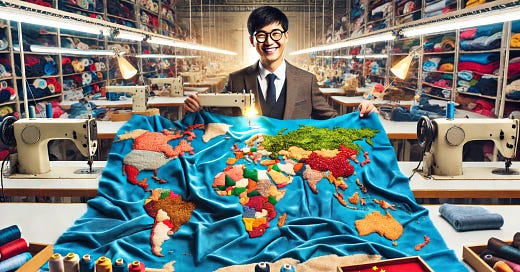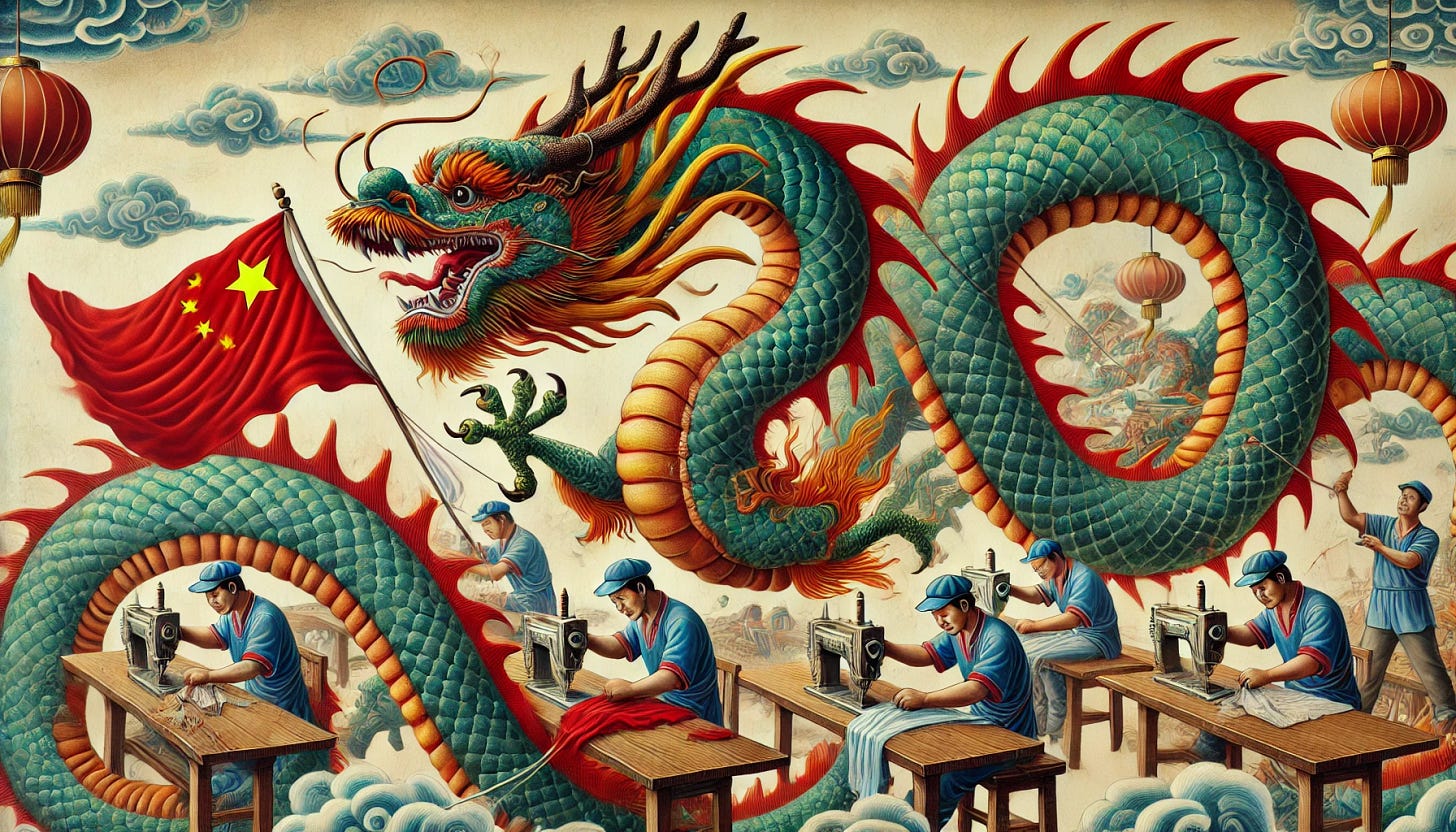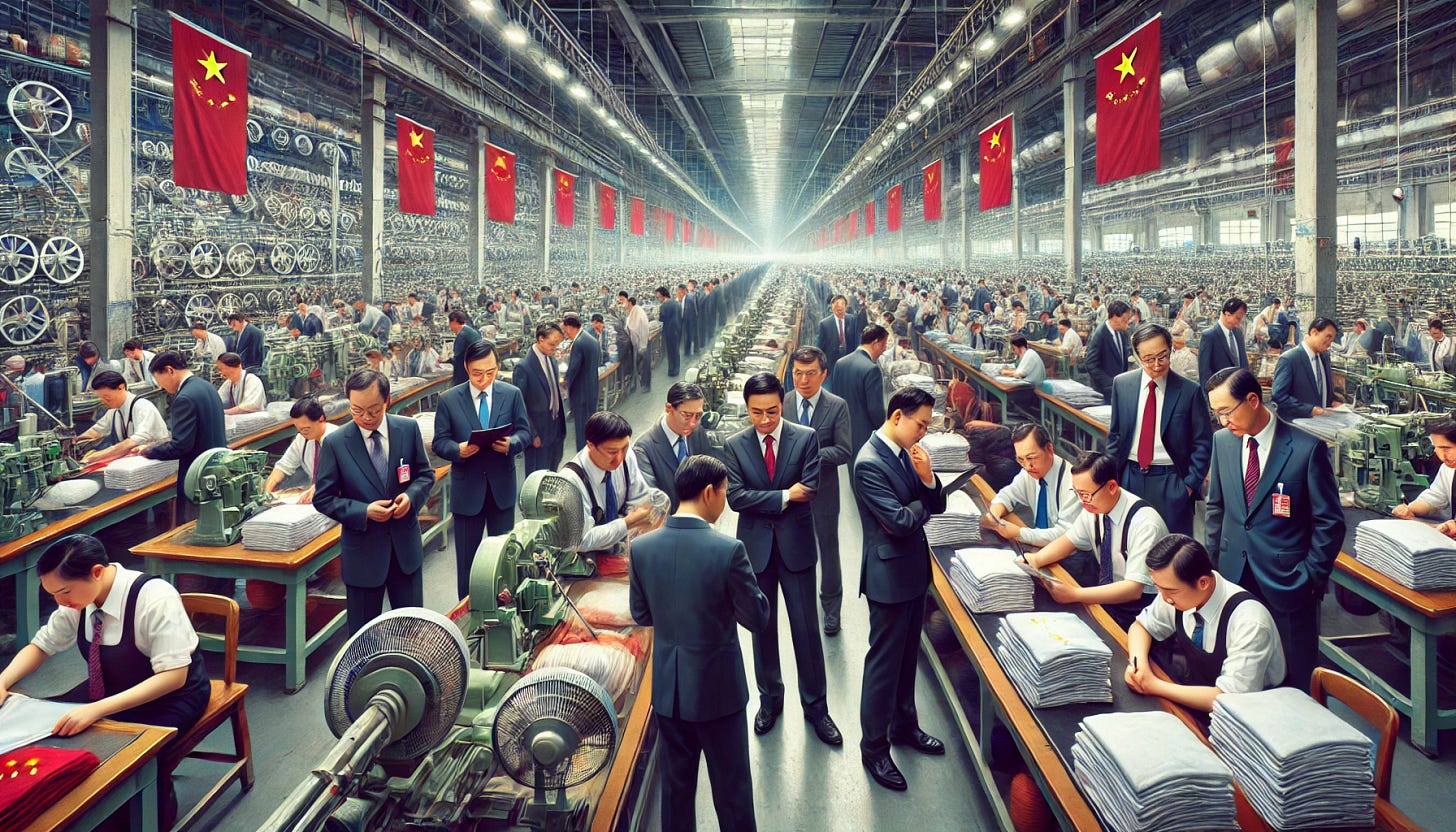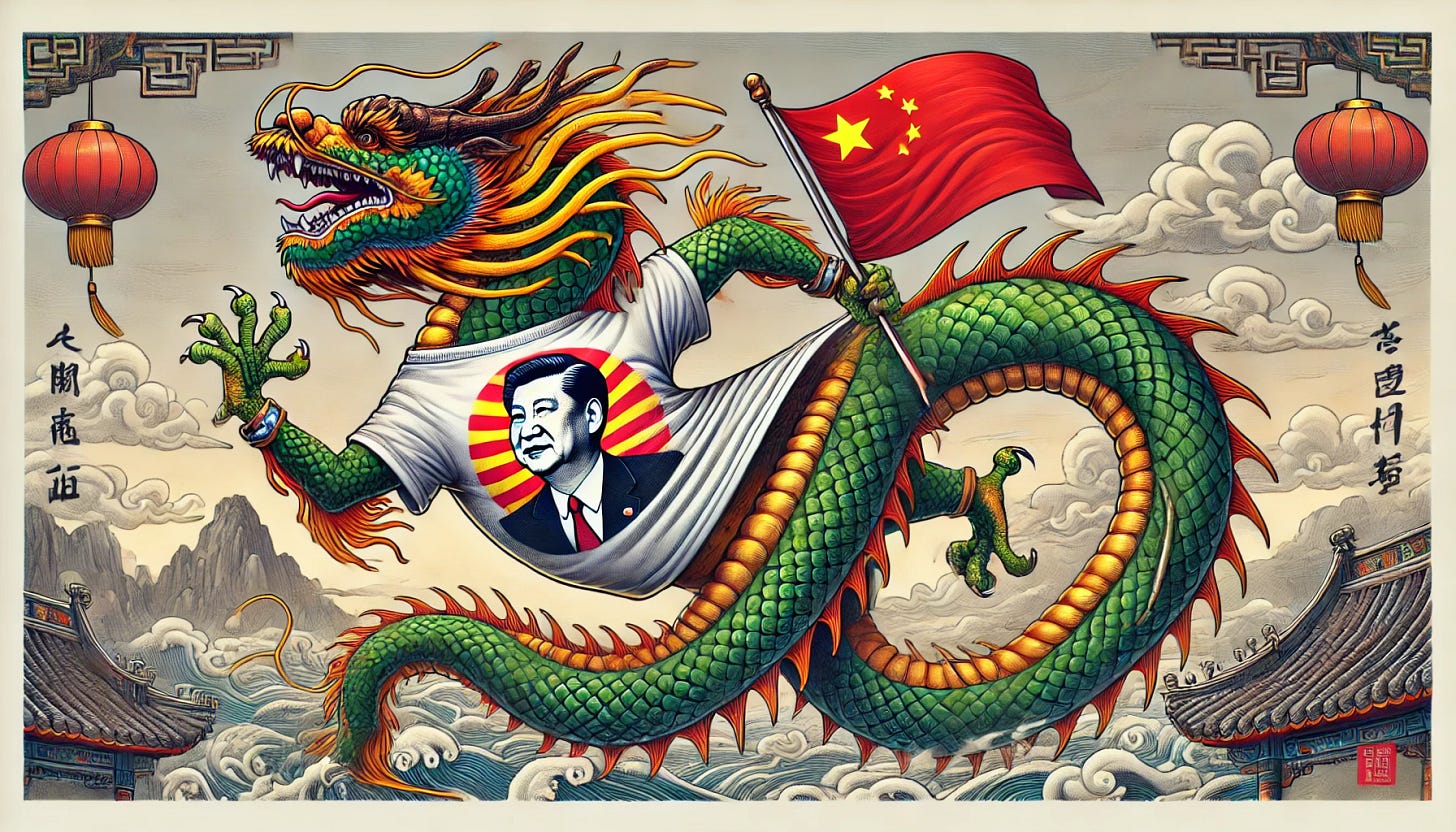#16: Unraveling China's Apparel Manufacturing Revolution
China's garment manufacturing industry is a colossal $300 billion behemoth, producing roughly one-third of the world's clothing.
Did you know that a significant portion of your wardrobe likely originated in China? That's right!
China's garment manufacturing industry is a colossal $300 billion behemoth, producing roughly one-third of the world's clothing.
That's more than the GDP of many countries!
In this edition of "Decoding The Dragon" we'll stitch together the fabric of China's apparel manufacturing story, weaving through its history, and present state.
And of course, that includes a dive into its expansive impact on the global stage and detailing the evolution, challenges, and colossal scale of this powerhouse.
That said, let’s roll!
The Weave of History: Building the Foundation
China's ascent to becoming the world's garment manufacturing hub began in the late 1970s with Deng Xiaoping's open-door policy.
The government's decision to open up the economy and prioritize export-led growth turned numerous small towns into manufacturing hubs.
This pivotal shift welcomed foreign investment and trade, fostering the establishment of numerous factories specializing in low-cost garment production.
The introduction of Special Economic Zones (SEZs) offered foreign investors low taxes and relaxed regulatory environments, which further boosted manufacturing, especially in textiles.
Thus, by the 1990s and 2000s, China had well cemented its position as the world's textile factory.
But, it all began earnestly with the economic reforms of the late 1970s.
The 2000s Boom: Spinning Faster
Thanks to China's entry into the World Trade Organization (WTO) in 2001, a massive hurdle to China’s textile industry’s growth was shattered.
This pivotal moment allowed China direct access to major markets in the US and Europe, significantly reducing tariffs on Chinese textiles.
As a result, the industry grew dramatically ahead. By 2005, it was already commanding a 31% share in global textile exports.
And by 2010, this had further surged to a peak of almost 39%!
Today’s Tapestry: A Look at the Current State
Fast forward to 2023, and China's apparel industry is a complex ecosystem.
It stands as an economic juggernaut, contributing approximately 35% of global apparel exports.
This complex but well-oiled machine encompasses mega-factories that are supported by an extensive network of suppliers, manufacturers, and logistics providers, enabling the swift production and delivery of massive volumes of garments at remarkably competitive prices.
Within this vast landscape, a few key players have emerged as industry leaders, shaping the course of China's apparel manufacturing success.
Shenzhou International: It collaborates with renowned global brands such as Nike, Adidas, Uniqlo, and Puma. The company's revenue exceeds $10 billion, and its factories are celebrated for their advanced automation and cutting-edge technology, setting new benchmarks for efficiency and quality.
Esquel Group: Esquel Group stands as a vertically integrated manufacturer of premium cotton shirts, supplying to iconic brands like Hugo Boss, Ralph Lauren, and Tommy Hilfiger. What sets Esquel Group apart is its pioneering practices in sustainable cotton production which make it a big draw for premium global brands.
Ruyi Group: With a diverse portfolio encompassing over 40 brands, Ruyi Group has been actively expanding its global footprint by acquiring international fashion brands like Aquascutum and SMCP. The group's vision is to establish a global fashion empire rooted in Chinese heritage, bridging Eastern and Western fashion sensibilities.
And there are many more like Bosideng, with a market value exceeding $6 billion, and Li-Ning, which posted revenues of nearly $3 billion last year, leading the charge.
Beyond these giants, a constellation of smaller manufacturers and suppliers forms the backbone of China's apparel manufacturing ecosystem.
Growth Drivers and Challenges: The Fabric Stretches
The ripple effects of China's apparel manufacturing industry extend far beyond its borders. And the massive domestic market also helps.
As a result, it stands as the world's largest employer in the sector, providing livelihoods for millions of individuals and contributing significantly to economic growth.
The industry's competitive pricing has democratized fashion, making stylish clothing accessible to consumers worldwide.
However, it faces headwinds from rising labour costs, which have seen some manufacturing shift to countries like Vietnam and Bangladesh.
Making things tough, many Chinese players are also facing scrutiny for their environmental impact and ill labour practices, particularly in Xinjiang.
Addressing these concerns remains an ongoing priority for both the industry and the Chinese government. Moreover, the ongoing US-China trade tensions pose a significant challenge, influencing tariffs and market access.
Policy Looms: Government's Role in the Fabric
Recent policy initiatives demonstrate China’s commitment to maintaining its industrial lead.
Furthermore, the government's support for 'going global' strategies has encouraged Chinese firms to invest in fashion brands overseas, securing their footprint on all continents.
The Government recognizes the need to evolve and is actively promoting the upgrading of its apparel manufacturing industry. In line with this, ambitious initiatives like "Made in China 2025" aim to elevate China from a low-cost manufacturer to a global leader in innovation and technology within the sector.
Thus, substantial investments are being channelled into automation, robotics, and sustainable practices to enhance efficiency, reduce environmental impact, and ensure the industry's long-term viability.
And as usual with Chinese giants, the Government is helping in a big way with monetary support.
Latest Stitches: New Investments and Trends
The recent $500 million investment by Shandong Ruyi Technology Group in upgrading their factories to automated systems underscores the industry's shift towards high-tech manufacturing.
Additionally, the shift towards online retail has propelled companies like Shein to global fame, leveraging China's robust manufacturing ecosystem to deliver fast fashion at unprecedented speeds.
Thus, a lot’s happening here!
Connecting Threads: Comparisons with India and the US
To put China's scale into perspective, consider that India exported about $35 billion in textiles in 2023. That’s just 12% of China’s market!
India's industry is still fragmented and striving to achieve the scale and efficiency of its Chinese counterpart.
Meanwhile, the US remains the largest consumer of apparel, providing a vast market for Chinese exports, despite political frictions.
Nonetheless, recent trade tensions and tariffs have prompted some brands to diversify their sourcing strategies, exploring alternatives to China in a bid to mitigate risks and reduce costs.
The Future Fabric: What Lies Ahead?
The future of China's apparel manufacturing industry is not without its challenges.
Rising labour costs, stricter environmental regulations, and intensifying competition from other countries pose significant headwinds.
Nonetheless, the industry's vast scale, technological advancements, and unwavering government support act as powerful tailwinds, propelling it towards continued growth and adaptation.
And, as we look towards the future, China's apparel industry appears poised for a sustainable makeover. With global brands increasingly demanding eco-friendly production, China’s manufacturers are adapting swiftly, integrating green technologies and recycling systems into their production lines.
And, one thing remains clear: China's textile industry will continue to be a key player on the world stage, influencing fashion trends and trade policies worldwide.
In this tapestry of innovation and tradition, China's apparel revolution continues to dazzle and deliver, dressing the world, one garment at a time.
Stay tuned for more insights in our next edition of "Decoding The Dragon," where we'll explore another facet of China's monumental global impact.
Best,
Jayant Mundhra











China's investment in tech to maintain its position as a low-cost provider is matching global consumers' preference for lower prices over nationalist interests. Though govt's efforts to expand globally, it's uncertain whether these markets are welcoming enough ;( .... Instead of pouring money I guess the govt needs to work on the PR thing :p